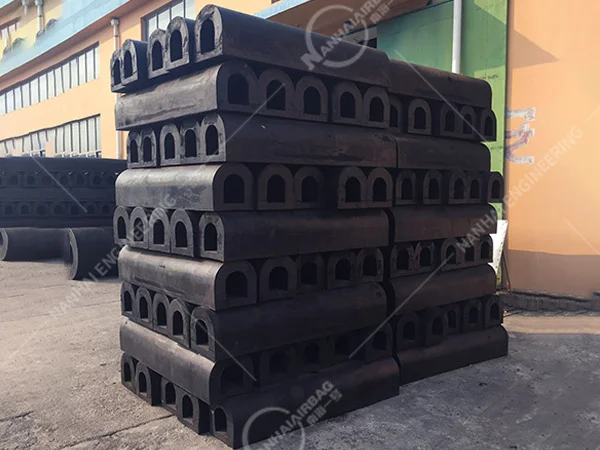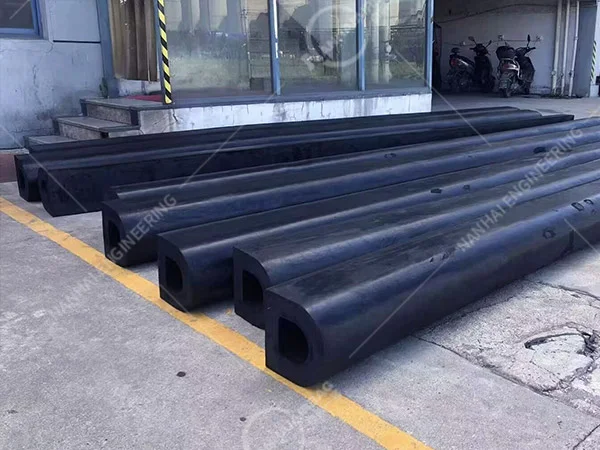Pneumatic Fenders: The Air-Powered Shields for Modern Harbors
22/05/2025Floating Fenders: The Smart Solution for Modern Maritime Safety
29/05/2025

Ever wondered how massive ships avoid crushing docks or tearing their hulls during docking? Enter D rubber fenders—the unsung heroes of harbors and marinas. These rugged, high-impact barriers are engineered to protect vessels and docks from collisions, saving millions in repairs and preventing environmental disasters. Let’s dive into why they’re a must-have for modern ports.
🔥 Featured Snippet Alert: What Are D Rubber Fenders?
D rubber fenders are specialized marine fenders made from dense, high-grade rubber. Designed for heavy-duty use, their unique shape and flexible structure absorb massive kinetic energy during ship docking or collisions. Commonly used in oil rigs, cruise terminals, and industrial ports, these fenders are a cornerstone of marine safety.
Why This Matters: When Ports Need D Rubber Fenders Now
Imagine a foggy morning when a cargo ship veers off-course and slams into a marina. Without D rubber fenders, the impact could obliterate wooden docks, sink yachts worth millions, or spill oil into coastal ecosystems. Here’s the urgent reality:
- Real-World Catastrophe: In 2022, a cargo ship collided with an unprotected jetty in Singapore, causing a 48-hour port shutdown and $20M in damages.
- Environmental Risks: Hard impacts often rupture fuel tanks, spilling oil and harming marine life.
- Financial Losses: Dock repairs can take months, crippling shipping operations and local economies.
Busy ports handling large vessels need D rubber fenders to prevent disasters.
🚢 How Do D Rubber Fenders Work?
Think of them as industrial shock absorbers. When a ship docks, its momentum pushes against the rubber fender. The dense material compresses, spreading the energy evenly and converting it into harmless heat. This prevents:
- Cracked Docks: No more costly concrete or wooden repairs.
- Hull Damage: Protects ships from costly scrapes and breaches.
- Downtime: Keeps ports operating 24/7.
Pro Tip: Pair them with tensioned mooring lines for maximum stability!
🌟 Why D Rubber Fenders Outperform the Competition
While standard marine rubber fenders handle light impacts, D rubber fenders are built for extreme scenarios:
- Superior Energy Absorption: Ideal for ships over 15,000 tons.
- Long-Lasting Durability: Resists UV rays, saltwater corrosion, and extreme temperatures.
- Space-Saving Design: Compact yet powerful, perfect for crowded harbors.
Example: Offshore oil rigs rely on D rubber fenders to withstand hurricanes and daily vessel collisions.
🌊 Where Are D Rubber Fenders Used?
- Commercial Ports: For cruise ships, cargo vessels, and tankers.
- Industrial Terminals: Handling heavy machinery and oversized loads.
- Private Marinas: Safeguarding luxury yachts and ferries.
💡 Top Benefits of D Rubber Fenders
- Save $500k+ Per Collision: Prevent one accident and avoid massive repair bills.
- Eco-Friendly: Cut fuel spill risks by up to 90%.
- Low Maintenance: Built to last 15+ years with minimal upkeep.
🔍 People Also Ask (Related Questions)
- “What’s the difference between D rubber fenders and marine rubber fenders?”
D rubber fenders are a subset designed for extreme impacts, while general marine rubber fenders suit lighter-duty needs. - “How long do D rubber fenders last?”
With proper care, they last 15–20 years. Regular inspections prevent wear-related failures. - “Can D rubber fenders be used in freshwater?”
Absolutely! Their rubber composition works in saltwater, freshwater, and harsh climates. - “Do I need professional installation?”
Yes. Improper installation can lead to leaks or premature failure.
🛠️ Ready to Upgrade Your Port’s Defenses?
D rubber fenders aren’t just an upgrade—they’re a necessity for ports handling large vessels. Whether you’re upgrading a bustling harbor or building a new marina, these fenders save lives, money, and the planet.
Need help choosing the right fender? Ask our experts below! 👇
